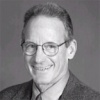As is typical at this time of year, many of us have identified New Year's resolutions for ourselves-goals to improve ourselves throughout the course of the year. The whole premise behind New Year's resolutions is that they're focused on improving things. Peoria NEXT and many of our community partners have taken a big step towards one of our own resolutions, but this particular resolution isn't just for the New Year, and we can't accomplish it on our own. This goal has to do with our community and, more importantly, our community's future. Peoria NEXT has a goal to make this community a community of knowledge.
The goal is ambitious but within our reach. The National Science Foundation (NSF) recently awarded Peoria NEXT a $600,000 "Partnership for Innovation" grant. This grant will support the implementation of several key action items focused on enhancing regional science and tech-based innovation. From an economic and workforce development perspective, this goal represents the opportunity to become a major player in the knowledge economy.
The grant will be administered by Bradley University and will enable the implementation of three key action items in Peoria NEXT's strategic plans for the area. The three initiatives are:
- Create interdisciplinary, inter-institutional research and development partnerships leading to innovation and commercialization.
- Develop innovative and aggressive educational and workforce development programs.
- Develop a model for the management of intellectual property.
All three initiatives are geared towards facilitating the development of the Peoria area as a leader in the knowledge economy. This includes the encouragement of a creative class and the cultivation of a cultural transformation to a more entrepreneurial business climate. For Peoria NEXT, it all comes down to leveraging our regional assets towards developing leadership in discovery, innovation, and commercialization.
One of the main goals of the proposal is to harness the raw research and development talent in the region to nurture interdisciplinary, inter-institutional research and development leading to innovation and commercialization. It's our goal to transcend organizational boundaries, stimulating collaboration amongst the various Peoria NEXT partners and community organizations.
Our knowledge communities are already doing this. The Peoria NEXT knowledge communities are groups of scientists, researchers, and engineers that meet to discuss and debate science and technology and their related issues.
Some of our current knowledge communities cover topics including materials science, nanotechnology, medical and engineering robotics, bioengineering, patient safety, ethics, and humans in the virtual environment.
This grant will allow Peoria NEXT to nurture the knowledge communities, stimulate collaborative research and innovation, involve early stage scientists in discovery and innovation, and increase the participation of non-scientists and students in discovery and innovation as well.
The second objective to be implemented through the grant program is to develop educational and workforce development programs. Peoria NEXT plans to do this by connecting science, technology, engineering, and mathematics (STEM) professionals and material resources in the region to complement ongoing "K-Grey" science education and workforce development initiatives.
The third objective is to develop an intellectual property (IP) management model, and link IP-based revenue to sustain programmatic initiatives. This objective requires that Peoria NEXT partners develop a model for the management of IP developed through collaborative partnerships between various entities. Furthermore, efforts will be made to link portions of IP-based revenue streams to Peoria NEXT programmatic initiatives.
The outcomes of these initiatives will be measured in many ways, including the number of reports and white papers generated, Web site hits, proposals generated, patents applied for, and additional course enrollments.
When it's all said and done, the outcomes will be measured in results. For the most part, however, many of the true results won't be clear for three to five years. The results will be clear when our students are interested in and excelling in math and science. The results will be visible when our scientists are collaborating with researchers from other disciplines and other institutions. The results will be tangible when IP is being commercialized and generating profits in central Illinois. The results will be apparent when our community becomes a community of knowledge and when the Peoria area takes its place as a competitive force in the knowledge economy. IBI

